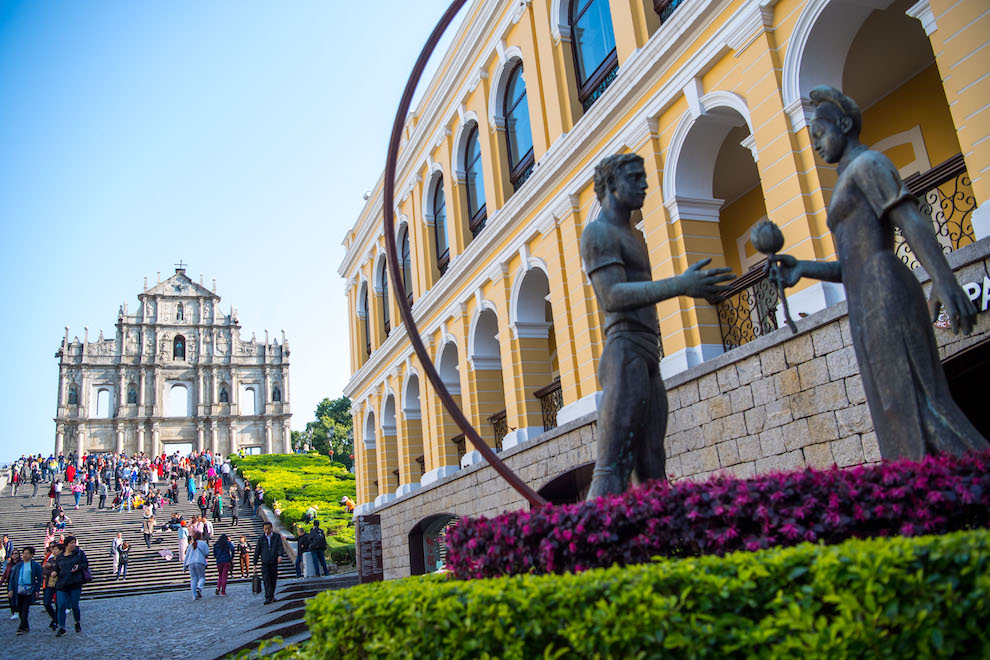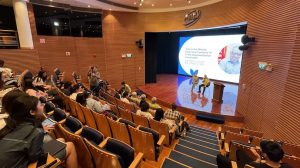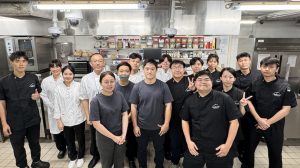Via analysis of over 10,000 posts on Xiaohongshu, a team of researchers featuring 2 IFTM scholars identified 4 main elements to the destination image of the Greater Bay Area
A study involving researchers from IFTM has used the popular Chinese social media platform Xiaohongshu, also known as “Little Red Book” or “Red” in English, to assess Chinese tourists’ image of the Guangdong-Hong Kong-Macao Greater Bay Area as a tourism destination.
The research team used computer-aided lexical analysis of content extracted from over 10,000 posts on the social media platform.
The authors concluded that the Greater Bay Area cities were “perceived holistically as a multi-image destination” that extends to gastronomy, international-level hotels, having attractive spots to take photographs, and convenient public transportation.
The Director of the IFTM School of Hospitality Management, Dr. Clara Lei Weng Si, and Lecturer Dr. Vicky Chen Zhaoyu collaborated on the project with Dr. Eva Zhou Xiaolin, a PhD graduate from the Department of Land Surveying and Geo-informatics at The Hong Kong Polytechnic University, and with Professor Brian King, Head of the Department of Hospitality, Hotel Management and Tourism at Texas A&M University in the United States.
The research paper, “Organic destination imagery and social media: Mapping tourism dynamics across China’s Greater Bay Area cities”, was published last year in the Journal of China Tourism Research (Click here for access to full paper.)
China’s Greater Bay Area initiative involves the two Special Administrative Regions of the People’s Republic of China, namely the Hong Kong SAR and the Macao SAR, along with nine cities from the Mainland’s Guangdong Province: Guangzhou, Shenzhen, Zhuhai, Foshan, Huizhou, Dongguan, Zhongshan, Jiangmen, and Zhaoqing. The initiative aims to integrate development in the Greater Bay Area concerning the economy, trade, environmental protection, and tourism, ensuring global competitiveness.
Based on the lexical analysis of the researchers’ study and further exploration, the team identified 4 main “clusters” for the destination image of the Greater Bay Area, associated with keywords, namely: ‘gastronomy’, ‘hotel’, ‘metro networks’ (public transport), and ‘recommendations’. Each cluster had “distinctive features”, based on the content of the Xiaohongshu posts, indicating an “agglomeration of [destination] images with different themes”.
‘Gastronomy’ was found to be a shared keyword for various Greater Bay Area cities, excluding Shenzhen and Zhuhai. It was a high-frequency search term for Macao and Guangzhou.
The second cluster, related to the keyword ‘hotel’, indicated that cities with the greatest number of international-chain hotels tended to attract more ‘hotel’ searches. Six Greater Bay Area cities, including Macao, were highlighted for their international-chain hotels.
The researchers noted that the Greater Bay Area was perceived as a destination with convenient public transport, particularly in Guangzhou, Hong Kong, and Shenzhen, as observed in the ‘metro networks’ cluster.
The keyword ‘recommendation’, referring to user posts offering tips to other platform users, formed the fourth cluster. Xiaohongshu users actively recommended tourism-related activities in most Greater Bay Area cities, the researchers found.
The researchers suggested that social media platforms like Xiaohongshu could provide valuable data for relevant entities within the Greater Bay Area to “inform” their respective decision-making processes when it came to tourism-market development.
The researchers recommended that destination management organisations used the study findings and cluster-related information to develop customised marketing strategies for their respective cities. For instance, cities currently appearing in only a single destination-image cluster should try to broaden their destination image by getting other tourism elements they already possess to be highlighted via social media.









